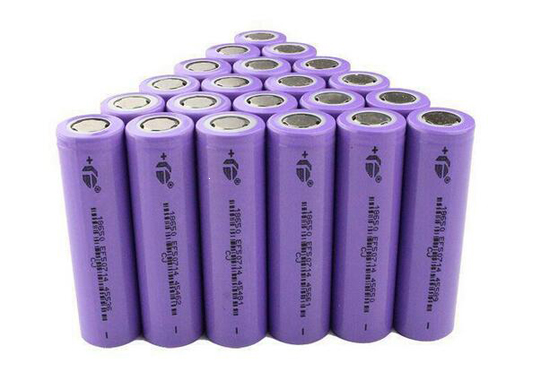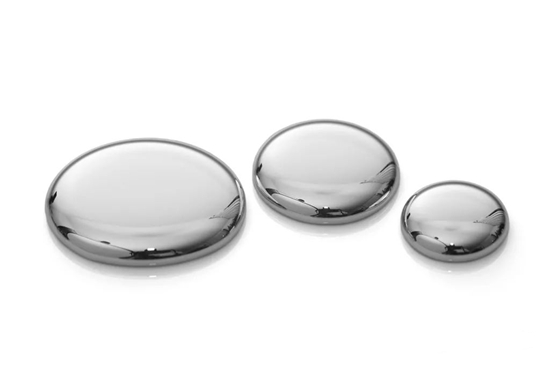Research and Application Prospect of Low Temperature Electrolyte
The effect of electrolyte on the low-temperature discharge performance of lithium-ion battery is the most significant. Therefore, in the research report on low-temperature lithium-ion battery, the key technology is to improve the low-temperature ion conductivity of the electrolyte.

1 Solvent
Under low temperature conditions, the main reason for the decrease in the conductivity of the electrolyte is the solidification of some of the solvents, which makes lithium ion migration difficult.Therefore, the key to improving the low-temperature conductivity of the electrolyte is to suppress the solidification of the solvent at a low temperature.This can be solved by optimizing the solvent.An electrolyte composed of a multi-component solvent is an important means for improving the low-temperature performance of the electrolyte.Plichta et al. prepared a ternary solvent low temperature electrolyte (LiPF6/EC/DMC/EMC), and the assembled battery still works normally at -40 °C.The electrolyte has weak corrosion to the positive current collector aluminum, and the battery cycle stability is good.
Among the solvent components, EMC has a significant effect on improving the low-temperature conductivity of the electrolyte.Now the major electrolyte companies have used this electrolyte as a general-purpose commercial lithium-ion battery electrolyte.However, this electrolyte has a poor low-temperature rate discharge and cannot be discharged in a lower temperature (less than -50 °C) environment.
More researchers use more than four electrolytes to comprehensively solve the low-temperature discharge performance of lithium-ion batteries.Propylene carbonate (PC) has outstanding potential as a solvent for low-temperature electrolytes due to its low melting point and large dielectric constant.However, PC has one more -CH3 than ethylene carbonate (EC), so that PC molecules are easily intercalated with Li+ in the graphite layer, causing the negative electrode structure to peel off.At present, researchers have seen hopes to solve this problem. The study of PC-based electrolyte shows that EC can better inhibit the phenomenon of PC embedded in graphite negative electrode.Therefore, the proper addition of a PC-based solvent to an electrolyte containing an ethylene carbonate (EC)-based solvent improves the low-temperature performance of the lithium ion battery.
2 Solute
Under low temperature conditions, the electrochemical reactivity of the electrolyte solute affects the low temperature discharge performance of lithium ion batteries, which is also the basis for selecting the solute of low temperature lithium ion batteries.The low temperature reactivity of the solute is not isolated, and it must be combined with a suitable solvent component to exert its low temperature discharge performance.Increasing the dissociation constant and electrochemical reactivity of solute ions is a direction in which efforts are needed to develop a solute for a low-temperature lithium ion-activated electrolyte.LiPF6 is electrochemically stable and easily soluble in organic solvents. It is the most commonly used solute, but it is easily decomposed into LiF and HF when used in battery.And the excessive impedance of the SEI film generated at low temperatures limits its application under low temperature conditions.LiBF4 and LiBOB have low charge transfer impedance and are widely used in the improvement of low temperature performance of lithium ion batteries.LiBF4 has the advantages of good thermal stability and small charge transfer resistance, but its film forming effect is poor. The solvent is easily embedded in the graphite layer of the negative electrode, causing the graphite structure to collapse and peel off from the current collector.LiBOB has attracted the attention of researchers because of its good film forming properties, overcharge resistance and low price.In the PC-based solvent, LiBOB can form a stable SEI film at the interface of the negative electrode, but it is hardly soluble in the chain carbonate, resulting in high viscosity of the electrolyte at low temperature, no capacity at -50 °C, so LiBOB is often used as an additive for lithium salts.
3 Additives
The addition of certain electrolyte additives improves the conductivity and stability of the SEI film, thereby improving the low temperature performance of lithium ion batteries.Therefore, the selection and optimization of electrolyte additives is also an important step to improve the performance of low-temperature lithium-ion start-up batteries.Vinylene carbonate (VC) is a more common additive.Aurbach et al. explored the mechanism by which VC additives were added to improve the low temperature performance of the battery:After a small amount of VC is added, the conductivity and stability of the electrode interface are improved.Thereby improving the low temperature performance of the lithium ion battery.Studies have shown that LiPO2F2 additive can improve the low temperature performance of batteries assembled by ternary material LiNi0.5Co0.2Mn0.3O2.

Summarize the previous research on the solute of low temperature electrolyte, optimize the choice of electrolyte solvent and solute, and make a reasonable ratio, optimize the mixing of additives, improve the interface properties of the electrode-electrolyte, which is the main means to optimize the performance of low temperature lithium ion starter battery.
High quality graphite manufacturer
If you need graphite powder, please feel free to contact: sales@graphite-corp.com







